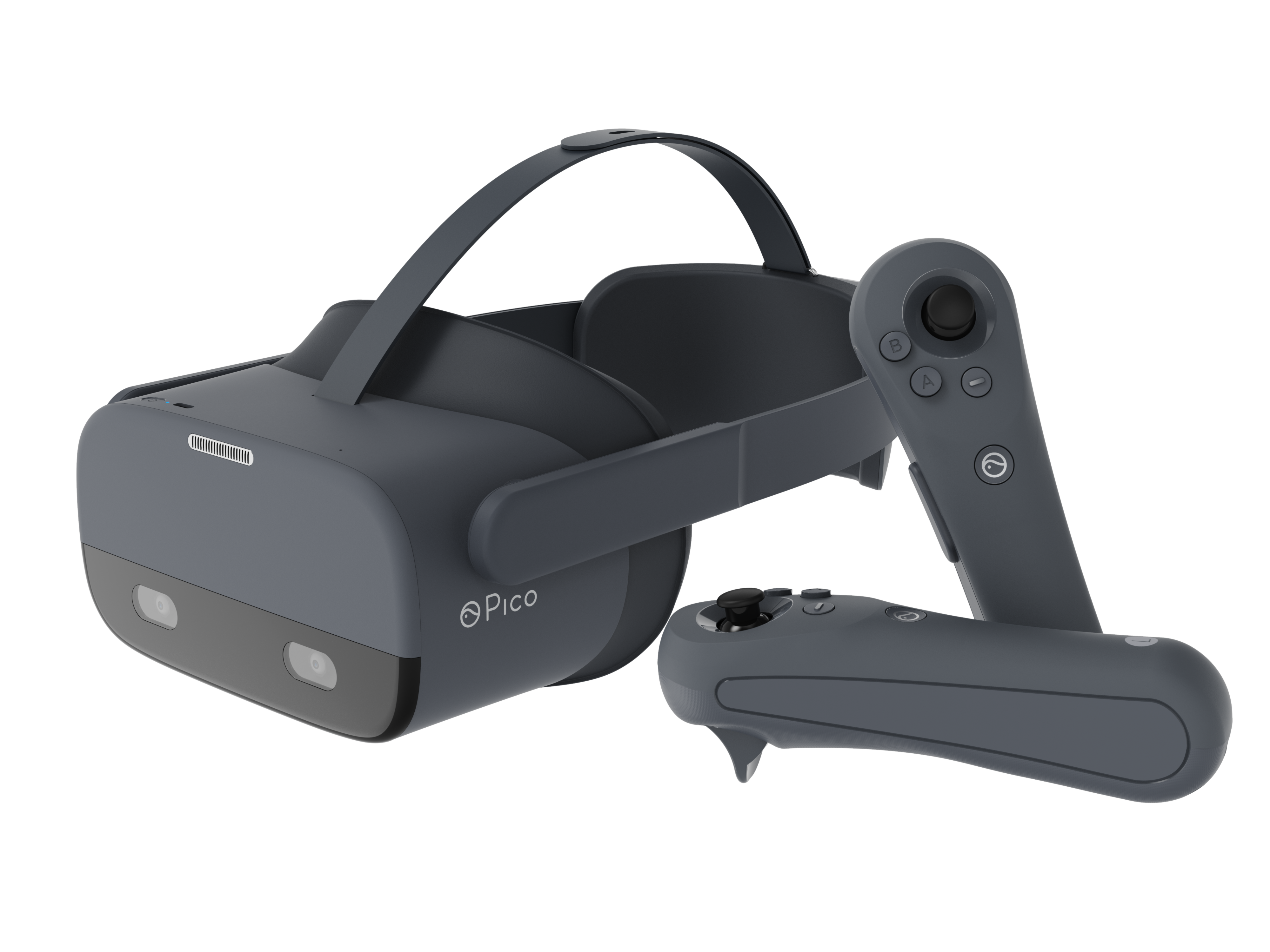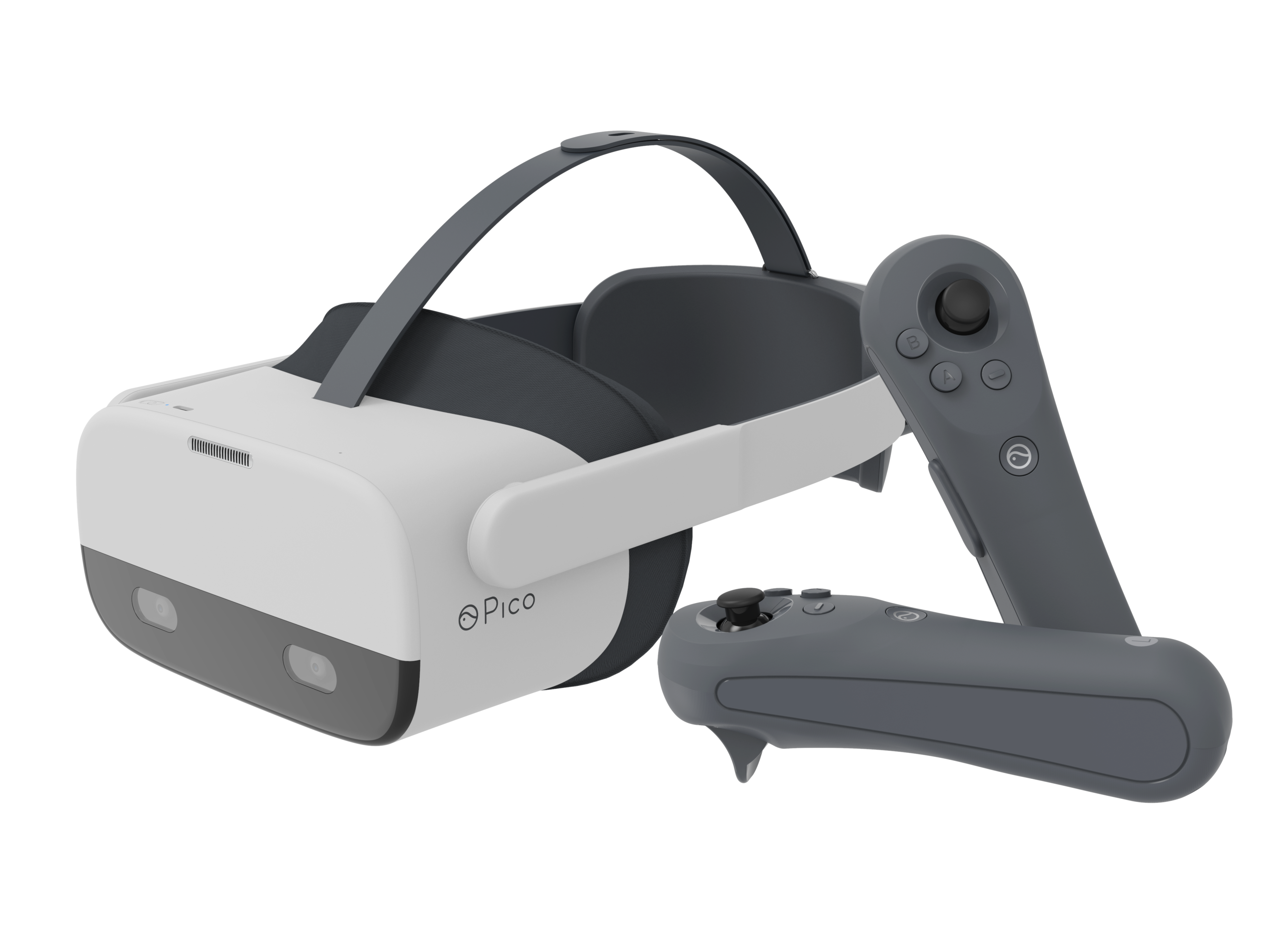Pico Neo 2 Eye Standalone VR Headset Makes Eye Tracking More Affordable
No base stations, cheaper Tobii eye tracking
VR is a marvel in its own, but when you add eye tracking to the mix, not only do you feel like you’re in the future, you feel like you have superpowers. With eye tracking, you can do things like navigate a menu, select items or move an object just by looking. The Pico Neo Eye 2 is the first HMD to make this a reality in a standalone form factor that doesn’t require an external base station.
Both the Neo Eye 2 and the Vive Pro Eye target enterprises, as that’s where the relevant apps are. I tried a beta version of MLB Home Run Derby VR with the HTC Vive Pro Eye in 2019, but for the most part, eye tracking is being used for applications like training and healthcare.
So while today’s news doesn’t point to a new way to game in VR, it does make the feature a bit more attainable by bringing the price down, with the Neo 2 Eye eye tracking headset entering availability today for $900. The new VR headsets and its controllers use 6-degree of freedom inside-out tracking. For comparison, the Vive Pro Eye’s MSRP is $1,600 with the required base stations enabling outside-in, room-scale tracking (although we’ve seen it for $1,400) or $1,000 for just the headset (we’ve seen it for $800).
Both headsets use Tobii technology for eye tracking. Pico Interactive highlights the technology as providing business with a way to attain a “deeper understanding of customer behavior, enhanced training efficiency and improved productivity and safety at work.” However, the Vive Pro Eye is clearly specced as a more premium option with better image quality and reliable tracking with base stations.
Pico Neo 2 Eye Specs
| Header Cell - Column 0 | Pico Neo 2 Eye | Pico Neo 2 | HTC Vive Pro Eye |
|---|---|---|---|
| Panel | Fresnel | Fresnel | 2x 3.5-inch OLED |
| Total Resolution | 3840 x 2160 | 3840 x 2160 | 2880 x 1600 |
| Refresh Rate | 75 Hz | 75 Hz | 90 Hz |
| Field of View | 101 degrees | 101 degrees | 110 degrees |
| Eye Tracking | Tobii eye tracking @ 90 Hz output frequency | None | Tobii eye tracking @ 120 Hz output frequency and 110 degree field of view |
| Weight | 12.7 ounces (360g) | 12 ounces (340g) | Not disclosed |
| IPD | Adjustable, 55-71mm | Adjustable, 55-71mm | Adjustable |
| Sensors | MU 9-axis, proximity Sensor, eye tracking | MU 9-axis, proximity Sensor, eye tracking | SteamVR Tracking, accelerometer, gyroscope, proximity sensor, IPD sensor, eye tracking |
| Price | $900 | $700 | With base stations: $1,600; Headset only: $999 |
I briefly got to try out the Neo 2 Eye during the CES trade show in January. The demo wasn’t as smooth or sharp as what I’ve experienced with the HTC Vive Pro Eye; however, the eye tracking worked pretty smoothly (but not perfectly) without much calibration.
For businesses who don’t need headsets that can monitor gazes, Pico also announced availability of the Neo 2, which is basically the same headset as the Neo 2 Eye but without eye tracking.
The Neo 2 Eye and Neo 2 both run on a Qualcomm Snapdragon 845 SoC with eight CPU cores and a clock speed of up to 2.8 GHz. For comparison, the Oculus Quest, today’s most popular standalone headset and what we consider the best VR headset for the typical consumer, uses a Qualcomm Snapdragon 835, which also has eight cores at a slower 2.45 GHz.
Get Tom's Hardware's best news and in-depth reviews, straight to your inbox.
Like the Vive Pro Eye, the Neo 2 Eye and Neo 2 both use Tobii Spotlight Technology for foveated rendering. According to Pico, that means better graphics, improving frame rates by up to 66% and cutting shading load in applications by as much as 72%. That last figure comes from a demo in the app Spot's Apartment, but a Pico rep told Tom's Hardware that "any application that has high pixel shading costs should see similar gains."
"In general, applications that are GPU bound, have increased light counts and textures, or have heavy color processing/complex pixel shaders should see a significant benefit," the rep said, pointing to VR design and simulation software around photorealism and apps for VR interactive scenes.
Pico-Interactive claims to have sold more than 200,000 of its headsets in verticals such as healthcare, marketing, training and location-based entertainment. Its customer list includes VR Coaster, as well as companies providing VR-driven anxiety relief to dental and anesthesia patients.
Pico told us it has no current plans to introduce a consumer version of the Neo 2 Eye or Neo 2 but said, "this isn’t something that Pico has ruled out for the future."

Scharon Harding has over a decade of experience reporting on technology with a special affinity for gaming peripherals (especially monitors), laptops, and virtual reality. Previously, she covered business technology, including hardware, software, cyber security, cloud, and other IT happenings, at Channelnomics, with bylines at CRN UK.
-
digitalgriffin Interesting tech. It's going to be quite a while before VR really gets the horsepower it needs to drive two 4K panels @ 90 Hz. And neither company seems to be approaching SLI/Crossfire/mgpu left/right eye rendering. So this is the only option.Reply
I keep hoping other companies like Valve hop onto this tech -
Pat Flynn The 2080 Ti can render at 8K at medium to high settings. While this isn't the same as 2x 4K, it does have the horsepower to run stuff like that, at medium settings. We're probably 1-2 generations from full dual 4K, but for now the top tier cards can run these units - just not at max settings.Reply
P.S.- SLI/Crossfire for VR requires game engine support from the developer. Most VR devs don't elect this route due to cost constraints - there's nowhere near the gaming market for VR versus PC/Console. This typically forces them to cut costs to get the game to market.


